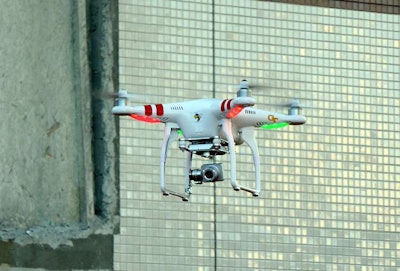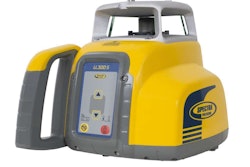
The Federal Aviation Administration is so far behind in creating regulations for commercial drone and unmanned aerial vehicle use that the agency will miss its 2015 deadline for issuing those rules by a full two years, and maybe even more.
According to a report from the Washington Post, Peggy Gilligan, a top FAA safety official, told a congressional House panel Wednesday that while a proposal on Unmanned Aerial Systems (UAS) regulations is currently under executive review, a final set of rules won’t come until after that proposal is published for the public to see and comment on, a process that could take several months.
“The consensus of opinion is the integration of unmanned systems will likely slip from the mandated deadline until 2017 or even later,” Gerald Dillingham, the civil aviation director for the Government Accountability Office, told the panel.
In the last few years, several industries, including construction, have discovered multiple uses for drones. In construction, the aircraft can be used for surveying, inspection, jobsite monitoring and compiling project progress among other uses. The most prominent suggested use for drones is delivery, with both Amazon and Google developing such services. In fact, Amazon has grown so tired of waiting for FAA approval to test delivery drones that the retail giant has threatened to move the service’s research and development outside the U.S.
RELATED: How drones and UAVs are already affecting construction jobsites
According to a report from The Verge, Matthew Hampton, the Department of Transportation’s Assistant Inspector General for Aviation Audits, told the panel that the agency is facing, “significant technological, regulatory, and management challenges,” in integrating drones into the National Airspace System. The two major technical hurdles the agency is facing are “establishing secure radio frequency spectrum for flight,” and correcting situations when an operator’s connection to an unmanned aircraft is interrupted.
There’s also trouble with the six test sites the FAA designated earlier this year for help in developing the rules. According to The Verge, Dillingham told the panel, “the test site operators told us that they were significantly under-utilized by the FAA and the private sector, and that they were unclear as to what research and development and operational data was needed by the FAA to support the integration initiatives.”
That the FAA will miss the 2015 isn’t much a surprise. Many have doubted the agency’s ability to meet the deadline and those doubts were only intensified in September when news broke that the new $5 billion program that will replace the current air traffic control system in the U.S. was designed without support for drones—even though Congress specifically requested that UAS be supported.
More doubts over the agency’s understanding of the technology arose in November when information on a proposal for the regulations leaked, saying that the rules would require drones to stay within an operator’s natural line of sight at all times, that flights would be limited to daylight hours and would require a pilot’s license that involves considerable time flying manned aircraft.












